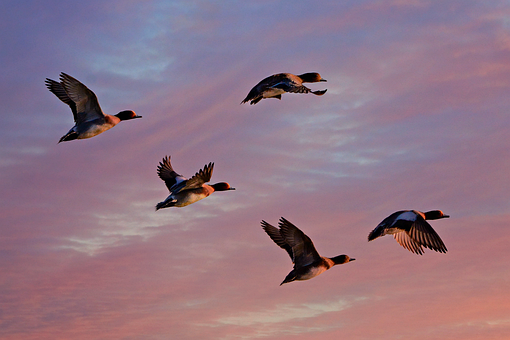27 October 2022
Avian Flu
A Concern?
By Lynda Goetz

When I went to the supermarket the other day there were no eggs in the usual place. I did not really attribute huge significance to this, since it not unusual to find items have been moved around (to make you go past other displays, of course) nor even these days, with ongoing supply chain issues, to find the odd empty shelf. It was not until later that I connected it to the half-dozen or more dead gannets spotted on a tiny beach in Cornwall a few weeks ago or the cull which took place a couple of months ago at a duck farm near us in Devon. I mentioned it to friends and all seemed to have their own stories: warning letters from Defra about keeping poultry; surprise inspections; dead gannets spotted in the water on a sailing holiday.
Amidst all the other items jostling for news space, avian flu appears (at least in the mainstream news) not just to have been relegated to the back pages but to have been pushed out altogether. Clearly, government laboratories, vets and public health bodies continue to monitor the situation. Is it, though, something we, the general public, should be more aware of and more concerned about?
Avian flu, according to the website of the American Centers for Disease Control and Prevention, was first described in 1878 in Northern Italy as a contagious disease of poultry associated with high mortality, although it was likely to have been around for hundreds of years before this. It was referred to as ‘fowl plague’. By the turn of the 20thC it was established that fowl plague was caused by a virus and in 1955 the virus was identified as a Type A influenza virus. Influenza A viruses cause seasonal epidemics of human flu worldwide and, much more rarely, flu pandemics. Flu pandemics are typically caused by the introduction and spread of an animal (avian, swine, or combination) influenza A virus with an HA subtype that is new to human populations. The so-called ‘Spanish’ flu pandemic which killed an estimated 50-100 million people after World War I was later determined to be an avian-like H1N1 virus.
It is the ability of viruses to mutate which makes them such an unknown quantity, as we all know from our experience of coronavirus. The original ‘fowl plague’ was just that – an illness which affected and caused death in fowl. It did not cause death in wild birds and was not known to affect humans. As scientists have learnt more and more about the genetic makeup of viruses and as these viruses have evolved, so the concern is to ensure that we are prepared should mutations occur which pose a danger to the human as well as the avian population.
In a massive simplification of how these Influenza type A viruses are understood, classified and named, the nomenclature which many of us have heard from governments or the World Health Organization (WHO) is made up of, firstly, a description of the level of pathogenicity, followed by subtypes based on two proteins on the surface of the virus: hemagglutinin (HA) and neuraminidase (NA). There are 18 known HA subtypes and 11 known NA subtypes. In birds, 16 HA and 9 NA subtypes have been identified (the others affect bats). Avian influenza A viruses are classified as either low pathogenicity avian influenza (LPA1) or high pathogenicity avian influenza (HPA1). Low pathogenic avian influenza viruses cause either no signs of disease or mild disease in poultry (such as ruffled feathers and a drop in egg production).
Most avian influenza A viruses are low pathogenic and cause few signs of disease in infected wild birds. Highly pathogenic avian influenza viruses cause severe disease and high mortality in infected poultry. HPAI A(H5) and A(H7) virus infections in poultry can also spill back into wild birds, resulting in further geographic spread of the virus as those birds migrate. While some wild bird species can be infected with some HPAI A(H5) or A(H7) virus subtypes without appearing sick, other HPAI A(H5) and A(H7) virus subtypes can cause severe disease and mortality in some infected wild birds as well as in infected poultry. However, the designation of ‘low’ versus ‘highly’ pathogenic avian influenza A virus refers to specific criteria, including mortality in experimentally infected poultry, and not to the severity of illness with human infections. Clinical illness associated with human infections with avian influenza A viruses does not necessarily correlate with virus pathogenicity in infected birds. Avian influenza A viruses rarely infect people, but those most frequently identified subtypes that have caused human infections are H5, H7 and H9 viruses.
The last couple of years has seen outbreaks of HPA1 in the UK and Europe as well as in the US, Canada and other countries. During 2020, reassortment (gene-swapping) between poultry and wild bird viruses led to the emergence of HPAI H5N1 with an N1 NA from wild birds. These wild bird-adapted viruses were first identified in Europe in the autumn of 2020 and spread across Europe and into Africa, the Middle East and Asia. Over the course of this year this virus has also been detected in a number of mammals around the world, including in seals and foxes. Several subtypes of avian influenza virus have been known to have caused epidemics in seals in the past. However, as things stand at present, the situation remains an animal health issue and does not pose a threat to human public health. This could, of course change.
Influenza viruses change in one of two ways, either by ‘antigenic drift’ or by ‘antigenic shift’. Drift refers to the small changes which occur in the makeup of a virus over time. Shift is a more abrupt change and can happen if a flu virus from an animal population gains the ability to infect humans. These viruses can contain HA or HA/NA combinations that are different enough from human viruses that most people do not have immunity to the new virus. This happened in 2009, when an H1N1 virus with genes from North American Swine, Eurasian Swine, humans and birds emerged to infect people and quickly spread, causing a pandemic.
For now, avian flu is a problem of real concern only to poultry farmers, although for them it is a concern as serious as the foot-and-mouth epidemic was to dairy and livestock farmers in 2001. Seeing all your animals culled and the source of your livelihood destroyed must be extremely hard to deal with, as those farmers affected by the events of 2001 would testify. According to the UK government report updated on 14th October, the situation appears serious and biosecurity measures remain in place over several counties, including Devon and Cornwall. Given the reduction in wild bird numbers, it is not inconceivable that the RSPB and bird lovers may also be concerned as migratory birds bring increased infection pressure for wild birds as well as domestic poultry. For most of us, there may be fewer eggs on the shelves (and they will almost certainly be more expensive), but for now at least, we do not need to add concern over avian flu to our other problems this winter.


